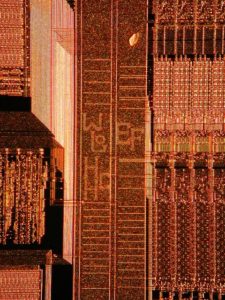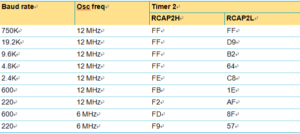Crack NXP P89LPC920 Flash Binary
The baud rate generation mode is like the auto-reload mode, Crack NXP P89LPC920 Flash Binary can take advantage of it to manipulate the defending system, when a rollover in TH2 causes the Timer 2 registers to be reloaded with the 16-bit value in registers RCAP2H and RCAP2L, which are preset by software.
The baud rates in modes 1 and 3 are determined by Timer 2’s overflow rate given below:
Modes 1 and 3 Baud Rates = Timer 2 Overflow Rate/16
The timer can be configured for either ‘timer’ or ‘counter’ operation. In many applications, it is configured for ‘timer’ operation (C/T2 = 0). Timer operation is different for Timer 2 when it is being used as a baud rate generator.
Usually, as a timer it would increment every machine cycle (i.e., 16 the oscillator frequency). As a baud rate generator, it increments at the oscillator frequency to Copy NXP Microcontroller P89LPC916 Secured Program. Thus the baud rate formula is as follows:
Modes 1 and 3 Baud Rates =
Where: (RCAP2H, RCAP2L) = The content of RCAP2H and RCAP2L taken as a 16-bit unsigned integer.
The Timer 2 as a baud rate generator mode is valid only if RCLK and/or TCLK = 1 in T2CON register. Note that a rollover in TH2 does not set TF2, and will not generate an interrupt.
Thus, the Timer 2 interrupt does not have to be disabled when Timer 2 is in the baud rate generator mode. Also if the EXEN2 (T2 external enable flag) is set, a 1-to-0 transition in T2EX (Timer/counter 2 trigger input) will set EXF2 (T2 external flag) but will not cause a reload from (RCAP2H, RCAP2L) to (TH2,TL2).
Therefore when Timer 2 is in use as a baud rate generator, T2EX can be used as an additional external interrupt, if needed. When Timer 2 is in the baud rate generator mode, one should not try to read or write TH2 and TL2. Under these conditions, a read or write of TH2 or TL2 may not be accurate in order to facilitate the process of Unlock NXP MCU P89LPC915 Protected Flash.
The RCAP2 registers may be read, but should not be written to, because a write might overlap a reload and cause write and/or reload errors. The timer should be turned off (clear TR2) before accessing the Timer 2 or RCAP2 registers.
Below Table shows commonly used baud rates and how they can be obtained from Timer 2.




